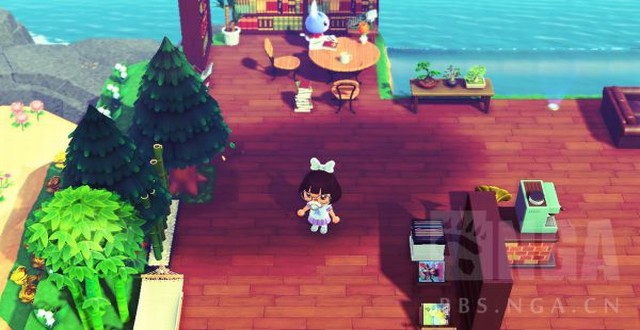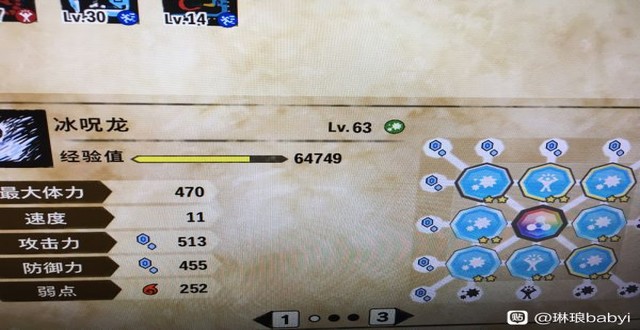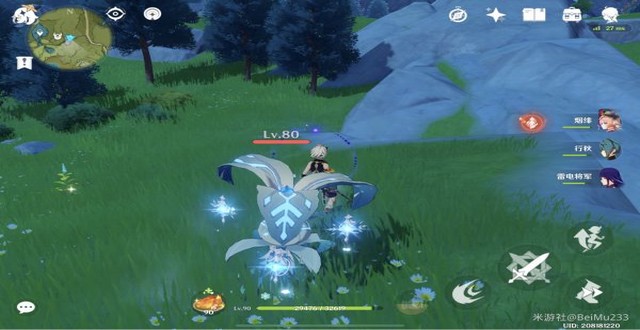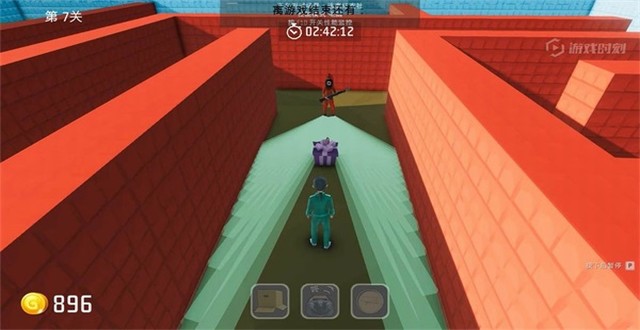【用英语介绍迪斯尼乐园..谢谢】
INTRODUCTION
Many companies throughout the United States and beyond are resorting to developing their business abroad. This is due to numerous factors such as the ability to cut costs through cheaper building material or labor, which leads to increg their revenues, functioning with more advantageous tax and labor laws, and expanding their market, just to name a few.
The Walt Disney Company was one of those many American organizations to expand on foreign soil. Its first foreign venture proved to be so successful that the decision was made to further expand abroad. This next foreign expansion experience, named Euro Disneyland did not prove to be the successful venture that had been anticipated by its creators.
Euro Disneyland a theme park comprised of an updated, state of the art Disney's Magic Kingdom, is a subsidiary of the Walt Disney Company located outside Paris, France, and has experienced numerous complications from its inception. Because the Walt Disney Company executives were determined to adhere to American philosophies, they did not thoroughly investigate all aspects of the European environment. This failure to do adequate research caused the Walt Disney Company executives and visionaries to construct their American dream theme park on foreign soil with little if any regard for the practical reality of the physical, financial, and/or cultural environment of their chosen site. More specifically, the Walt Disney Company's "...biggest mistakes were its overambitious plans to develop the site, plus Euro Disneyland's financial structure itself, which depended on a highly optimistic financial scenario with little room for glitches" (Gumbel & Turner, 1994, p. A 12). These massive oversights were contributing factors to the problems faced at Euro Disneyland.
As a company planning on expanding abroad, it is helpful to study the history of companies which previously have developed in other countries. For example, studying the Walt Disney Company's venture into France will allow other companies to learn from the Walt Disney Company's experiences. Recognizing, understanding and avoiding their mistakes will allow a company entering a new country increased opportunity to succeed. Reviewing the Euro Disneyland venture from the site research investigation to the present day operation will be beneficial to a company considering expansion abroad.
THE HUMAN RESOURCE CONNECTION
The human resource professional often is involved in determining the optimum site for a business and is responsible for many other aspects of an international expansion, such as cultural evaluation of the site, employee selection, training, development, compensation, and evaluation, just to name a few. Thus, as a human resource professional it is pertinent to research companies which have succeeded and those which have not, in order to better prepare. Furthermore, human resource professionals must comprehend the laws, traditions, culture, and people of a country in order to minimize problems which can occur.
THE BEGINNING
In order to understand the issues involved in the Walt Disney Company's international expansion in Europe it is pertinent to review the background of Euro Disneyland. This can be done by looking at how the site, Paris, France, was chosen, at the signed agreement, at the risk management issues, and at the opening.
Why Paris?
The Walt Disney Company choose Paris, France, as the site of Euro Disneyland for many reasons. On April 15, 1983, the Walt Disney Company opened in Tokyo, Japan, their first theme park outside the United States. This theme park, Tokyo Disneyland became an instant hit. In fact, since the Walt Disney Company executives believed they learned so much about operating a theme park in another country, and since Tokyo Disneyland was an instant success, they began immediately to search for a site for a fourth park (Scimone, 1989).
To find a site for their fourth theme park, the Walt Disney Company looked to Europe where Disney films historically have done better than in the United States. Because of this film success, the Western European audience already was familiar with Disney entertainment and merchandise (Scimone, 1991). From 1983 through 1987 the company searched for sites in the United Kingdom, France, Germany, Spain, and Italy. Finally the possibilities were narrowed down to Costa del Sol in Spain and Paris in France. Although Spain had the edge due to its climate, France had a larger population and a spectacular transportation network (Scimone, 1989). The Walt Disney Company executives believed since Tokyo Disneyland located in a cold-weather climate and virtually the same latitude as Paris, was so successful, they would be able to operate in similar weather conditions in Paris. In fact, Disney executives admit that "...without the cold-climate (Tokyo) Disneyland success, they would never have picked Paris, which has the same or worse weather than Tokyo" (Anything but a 'Mickey Mouse', 1989). Thus, Paris was selected to be the site of their fourth theme park.
The site for Euro Disneyland is a "...parcel of prime suburban real estate in a mushrooming region called Marne-la-Vall闲" (Tully, 1986, p. 172). In fact, the land is one-fifth the size of Paris itself (Scimone, 1991). When the French government used its right of eminent domain to sell Disney the 4,400-acre (1,943-hectares) site at a fraction of its market value for approximately $7,500 an acre, there were bitter protests by the local farmers whose sugar beet fields had been farmed by the same families for a hundred years or more (Tully, 1986; Toy, Maremont, & Grover, 1990). The Walt Disney Company worked with the local farmers to avoid any potential problems. Their efforts were successful. The farmers were proud of the fact that people from many nations would be coming to their area of the world (Tully, 1986; Toy, Maremont, & Grover, 1990).
Marne-la-Vall闲 is located in an ideal geographic location since it is 20 miles (32 kilometers) due east of the center of Paris and is halfway between the two international airports of Orly and Roissy-Charles-de-Gaulle. The French railway regional express network connects Marne-la-Vall闲 with the Paris metro system, and major highways are nearby (Scimone, 1989). In fact, of more than 350 million Western Europeans, 17 million can reach the Euro Disneyland resort within two hours by car (Scimone, 1991) and 310 million can fly creating a "...denser market than the United States" (Toy, Maremont, & Grover, 1990, p. 61). With the scheduled opening (which took place May 1994) of direct rail links to Great Britain via the English Channel there were countless additional potential guests. Thus, due to its transportation availability, Paris offers Euro Disneyland a wealth of potential guests and employees (Grey, 1989).
The Agreement
On March 23, 1987, the Walt Disney Company signed a contract with the French national, regional and local governments, which promised Disney: favorable loan terms; that the rapid transit railway system would be extended to the theme park from Paris; that two interchanges would be built to link Euro Disneyland with a main highway; and that a special station for high-speed trains would be constructed at the park (Shapiro, 1989; Introducing Walt d'Isigny, 1992). Unlike the Walt Disney Company's wholly-owned American theme parks, and Tokyo Disneyland where Disney receives license fees from Mitsui and Oriental Land Corporation, Euro Disneyland is a public company with 51% of equity owned by EC individuals and institutions (Anything but a 'Mickey Mouse', 1989). The other 49% of the shares are owned by the Walt Disney Company who maintains management control of the company (Grey, 1989).
The Walt Disney Company promised new jobs and contracts for local suppliers which resulted in red carpet treatment from France. More specifically, Euro Disneyland planned on hiring 12,000 new Cast Members (employees). About 6,000 would work in Euro Disneyland's Magic Kingdom, 5,200 in hotels on the property, and the remainder in recreation and support facilities. The area was suffering high unemployment at the time and the Walt Disney Company executives believed the economic benefits to the region would be great since they would employee so many local citizens and since tourism generates revenue without requiring such costly social services as schools and hospitals (Scimone, 1989).
Risk Management
Once the Walt Disney Company executives chose Paris, France, as the site for their fourth theme park, they had to integrate American risk management techniques into a French environment. This integration of differing management techniques is typical with any company doing business abroad (Shapiro, 1989). However, a great deal of time, patience, understanding, education, and willingness to accept and/or compromise are needed from all parties involved in order to make this integration successful. The Walt Disney Company has been known for their strict construction and risk management requirements which they wished to impose upon the French workers. Likewise, the Walt Disney Company had to cope with language barriers and an unfamiliar French legal framework derived from the Napoleonic code (Shapiro, 1989). Thus, this joint venture caused many conference sessions to determine how to best integrate American and French risk management practices covering a multitude of diverse risks (Euro Disneyland combines American, 1989). It was important to each side for them to join their philosophies and requirements into a system which would work for Euro Disneyland.
A good example of the blending of two different systems is the difference in insurance laws in France and the United States. A ten-year owner/contractor insurance policy that covers property damage and third-party claims stemming from construction-related defects was required by French law. The Walt Disney Company would have preferred to purchase a three-year contract as would be allowed by American standards, but could not since they were developing in another country (Shapiro, 1989). Instead, the Walt Disney Company had to abide by the laws of France.
An issue which the French were against was the installation of sprinklers in the hotels (McIntyre, 1990b). Such an installation is not mandated by French law. The French believe the sprinklers are not necessary since "...their hotels are built with superior construction, building materials and compartmentalization, and are equipped with smoke alarms that would quickly summon firefighters" (McIntyre, 1990b, p. 143). 2 Thus, since Euro Disneyland was a French Company, the French did not believe they needed to install sprinklers. The Walt Disney Company believed in such sprinkler installation and embarked on an education program to explain why they wanted the French contractors to install the sprinkler system. Once the Walt Disney Company presented a film on fires depicting how quickly flames can spread, explained about potential delays in firefighters arriving at a hotel, and discussed the difficulties in finding the location of the fire, the French approved the installation of the sprinklers.
These are only two examples of many situations which were discussed by the Walt Disney Company and the French during their risk management meetings. In a wrap-up meeting of risk management issues in the construction of Euro Disneyland Stephen M. Wilder, director of corporate risk management at The Walt Disney Company believed, "The result of compromise and learning is a program that is far superior to what an American company or a French company would have done in isolation" (McIntyre, 1990a, p. 141).
Opening Day
On April, 12, 1992, despite a few protests, the Walt Disney Company's fourth theme park, Euro Disneyland opened its doors to the public with essentially the same attractions as in the other Disney theme parks in California, Florida, and Japan (Introducing Walt d'Isigny, 1992). Euro Disneyland executives hoped to attract 11 million guests a year, more than twice the number that visit the Eiffel Tower (Introducing Walt d'Isigny, 1992). Half of the guests were excepted to be French. Euro Disneyland was confident that with its superior investment, professionalism and French government assistance, it would succeed. If it did not, it would most likely be the fault of the weather and not of any French cultural chauvinism (Introducing Walt d'Isigny, 1992). Unfortunately, the dream of succeeding did not become a reality and eventually Euro Disneyland brought in new management and made other changes in order to save Euro Disneyland (Gumbel & Turner, 1994).
THE PROBLEMS
Although Disney believed they had hit a "gold mine" by developing their fourth theme park just outside of Paris, in time they would learn this was not the case. Euro Disneyland's target of 11 million guests in the first year was met, but revenues did not roll in as had been planned. In fact, Euro Disneyland reported a $905 million loss for the fiscal year that ended in September 30, 1993 (Sterngold, 1994), and by December 31, 1993, Euro Disneyland had amassed cumulative loss of 6.04 billion French francs or 1.03 billion US dollars (Gumbel & Turner, 1994).
It should be noted, Euro Disneyland's first chairman, Robert Fitzpatrick, an American, won kudos for setting up the park, yet he stumbled over day-to-day operations. Fitzpatrick spoke French, knew Europe well and his wife was French. But he seemed to be "...caught in the middle and quickly came to be regarded with suspicion by some on both sides" (Gumbel & Turner, 1994, A 12). Numerous times he attempted to warn Disney executives that France should not be approached as if it were Florida, but his warnings were ignored. He was replaced in 1993 by Frenchman Philippe Bourguignon. The all-American enterprise suddenly had raced to put on a European face. ourguignon was responsible to "...ensure the park goes native without losing the American feel that is its main draw" (Sasseen, 1993, p. 26).
Although there was a change in the head of Euro Disneyland there are problems which it faced with the old management and still faces problems with the new management. Among these problems are included their optimistic assumptions, staffing and training, cultural issues, interest rates, marketing, communication, and convention business.
Optimistic Assumptions
The Walt Disney Company, overly ambitious in their venture, made several strategic and financial miscalculations. In addition it gambled, incorrectly, that the 1980's "...boom in real estate would continue, letting it sell off assets (discussed below) and pay down the debt quickly" (Gumbel & Turner, 1994, p. A 1). Further, it relied too heavily on debt when the interest rates were beginning to increase. Another costly assumption was that Disney believed it could change certain European habits.
Budget - Breakers
The Walt Disney Company wanted to build a state of the art, as near to perfect as possible, theme park. In order to meet this goal the company frequently attempted to build and rebuild, with no regard for the "bottom-line" construction cost. Michael Eisner, the Chief Executive Officer of the Walt Disney Company, ordered several last-minute construction changes, known as budget-breakers, which further increased Euro Disneyland's debt (Gumbel & Turner, 1994). For example, one cold day before Euro Disneyland opened Eisner warmed himself by a Paris hotel lobby fireplace and ordered more than a dozen wood-burning fireplaces for Euro Disneyland despite the added construction cost and upkeep (Solomon, 1994). Another example of an Eisner budget-breaker was his decision to remove two steel staircases from Euro Disneyland's Discoveryland. He wanted them removed because they blocked a view of the Star Tours ride. It was estimated the cost to remove the staircases was approximately $300,000 (Gumbel & Turner, 1994).
European Recession
Euro Disneyland executives and advisors failed to see the signs of the approaching European recession. "Between the glamour and the pressure of opening and the intensity of the project itself, we (the executives) didn't realize a major recession was coming" (Gumbel & Turner, 1994, p. A 12). As the recession began to develop the French real-estate market tumbled (discussed below), thus, destroying Euro Disneyland's hopes of selling their assets and receiving revenues. In addition, the recession caused French and European disposable incomes to shrink, causing families to think twice about taking an expensive trip to Euro Disneyland (France: Disney gears up, 1992).
Furthermore, Euro Disneyland did not realize the magnitude of the impending recession and when given numerous opportunities to sign partners who would share the risk or buy the existing hotels, Disney refused. Euro Disneyland did not want to give up any of the potential revenues once the recession was over (Gumbel & Turner, 1994).
Real Estate Market
The Walt Disney Company executives involved in the development of Euro Disneyland were determined they would not repeat two mistakes which they had made in past ventures. One mistake was allowing other companies to build lucrative hotels surrounding their theme park, as happened at Walt Disney World in Orlando, Florida, where the Walt Disney Company owns only 14% of all hotels. The other mistake was in letting another company own a Disney theme park, as in Tokyo, Japan, where Disney just collects royalties from an immensely profitable attraction (Solomon, 1994). Thus, in France the Walt Disney Company bought far more land then it needed in order to eventually build 700,000 square meters of office space, a 750,000 square meter corporate park, 2,500 individual homes, a 95,000 square meter shopping mall, 2,400 apartments and 3,000 time share apartments (de Quillacq, 1994).
Euro Disneyland planned to develop the land and then sell it to prospective buyers, making a large profit. In addition, this would allow Euro Disneyland stringent control over designing and building of future areas within the resort and then the ability to sell off the completed commercial properties in due course and at a large profit. In fact, Disney budgeted for real estate to account for 22% of revenues in 1992, 32% of revenues in 1993, 40% of revenues in 1994, and 45% in 1995 (de Quillacq, 1994). Euro Disneyland executives must have known rather rapidly that the financing structure for the resort was in trouble. Unfortunately, this revenue generating plan never really "got off the ground" due to the collapse of the real-estate market which, in turn, caused the demise of the planned development around the theme park (Turner, 1993, December; de Quillacq, 1994). Thus, Euro Disneyland did not receive revenue from property development as had been anticipated.
Operational Errors
There were numerous errors made regarding the overall operation of Euro Disneyland. For example, from its American experience the Walt Disney Company thought Monday would be the light day for guests and Friday a heavy one, and allocated staff accordingly. In reality the reverse was the case. In fact to this day, the company still struggles to find the right level of staffing at a theme park where "...the number of visitors per day in the high season can be 10 times the number in the low season" (Gumbel & Turner, 1994, p. A 12). Furthermore, to add to the operation problem is the difference in employee acceptance of conditions of employment. In Orlando Cast Members are accustomed to and have learned to accept being sent home if they are not needed. However, in Paris, French Cast Members feel extremely irritated by and have a very difficult time accepting the inflexible scheduling (Gumbel & Turner, 1994).
Another example of operational assumptions at Euro Disneyland i
【DOTA2 mdl巴黎迪士尼major预选什么时候开始?】
DOTA2 mdl巴黎迪士尼major预选 海选3.21-3.24 预选3.29-4.1 火猫可以看比赛
【DOTA2 mdl巴黎迪士尼major预选 有版权吗?】
DOTA2 mdl巴黎迪士尼major预选 mdl比赛火猫都会有版权的
【迪斯尼乐园(大侠帮忙用英文给介绍下面的内容)】
1919年,年仅19岁的穷画家兼动画制作者沃尔特·伊莱亚斯·迪斯尼和他的好友伊沃克用一架旧电影摄像机首次摄制了一部仅放两分钟的动画故事片,接下来又制作出了如《三只小猪》、《白雪公主和七个小矮人》、《阿拉丁》、《罗宾汉》等等一系列作品,形成了独特的迪斯尼世界。1923年,沃尔特和他的兄弟罗伊创立了迪斯尼公司。1955年,迪斯尼把动画片所运用的色彩、刺激、魔幻等表现手法与游乐园的功能相结合,推出了世界上第一个现代意义上的主题公园——洛杉矶迪斯尼乐园。
【之前DOTA2 esl洛杉矶major预选赛没看,接下来能在哪看到最新消息?】
DOTA2 esl洛杉矶major是火猫直播的版权,那里应该有最新消息
【dota2一年中都有什么重大赛事】
每年8月份会有国际邀请赛,即TI赛事,是每年最重要的赛事。除此之外V社还设立了两次major赛事,是官方仅次于国金邀请赛的赛事。
剩下的像SLI,summit,ESLone等联赛也都是国际大型赛事,值得一看。





